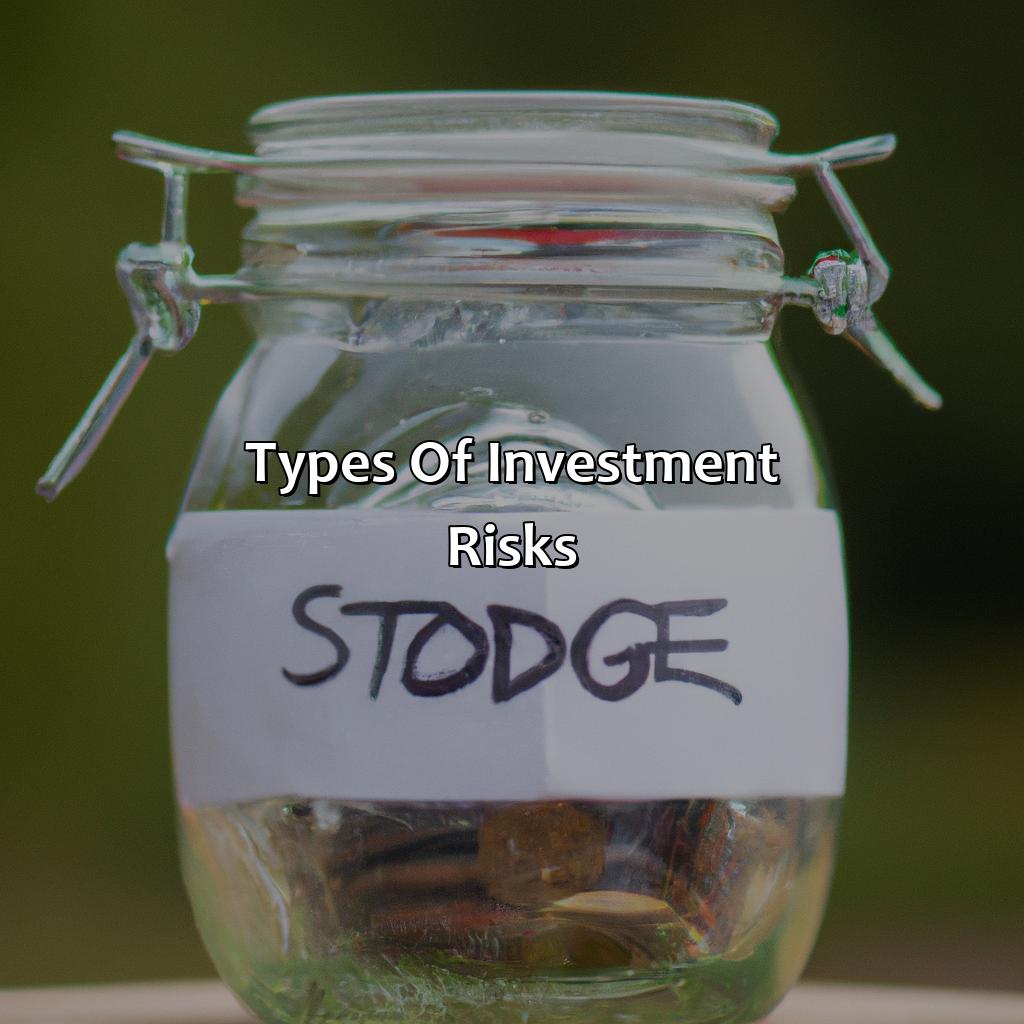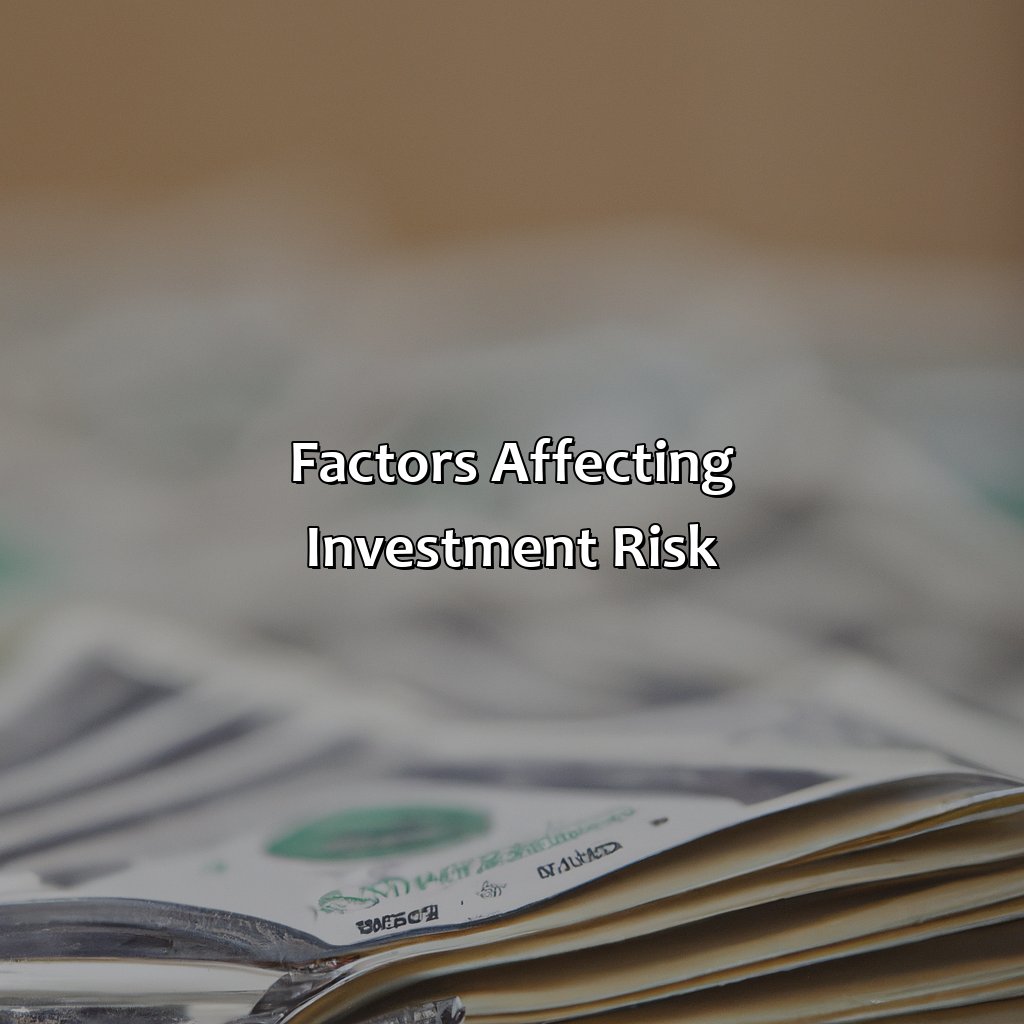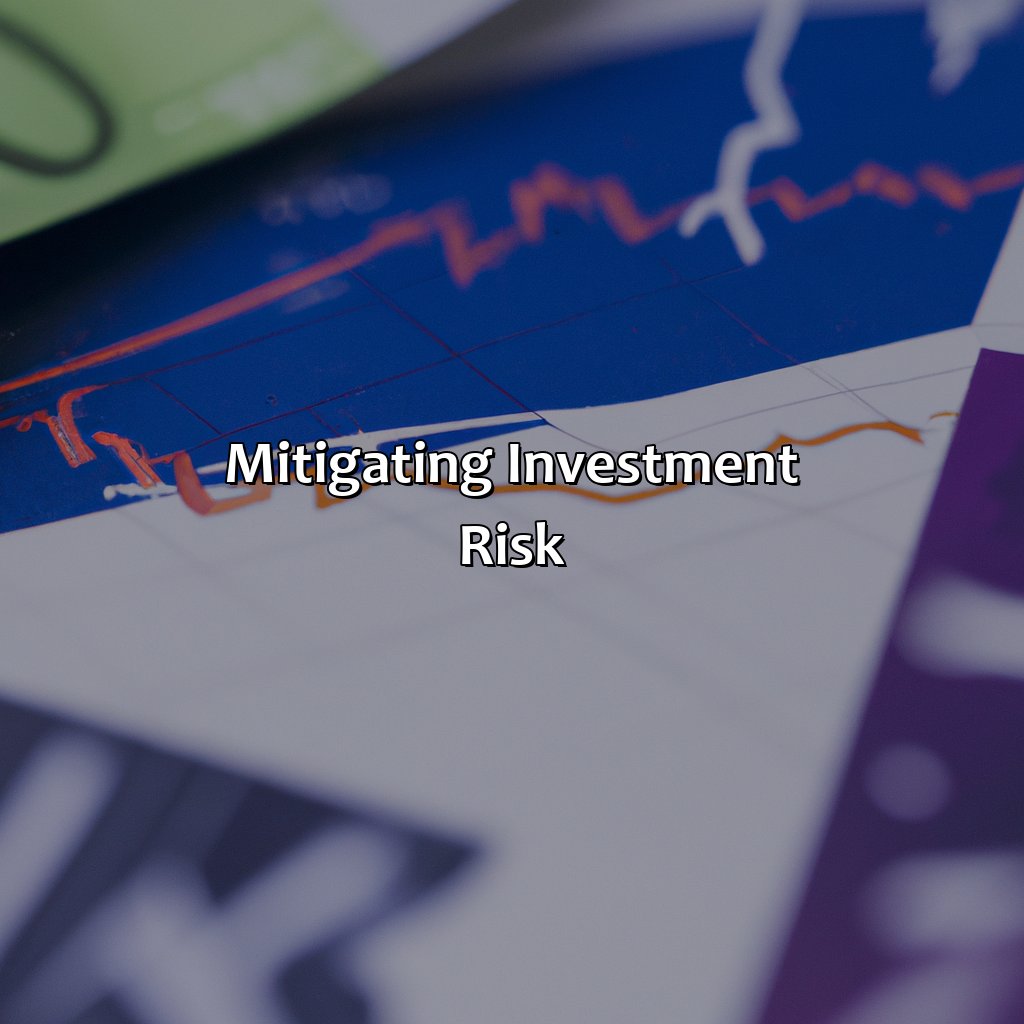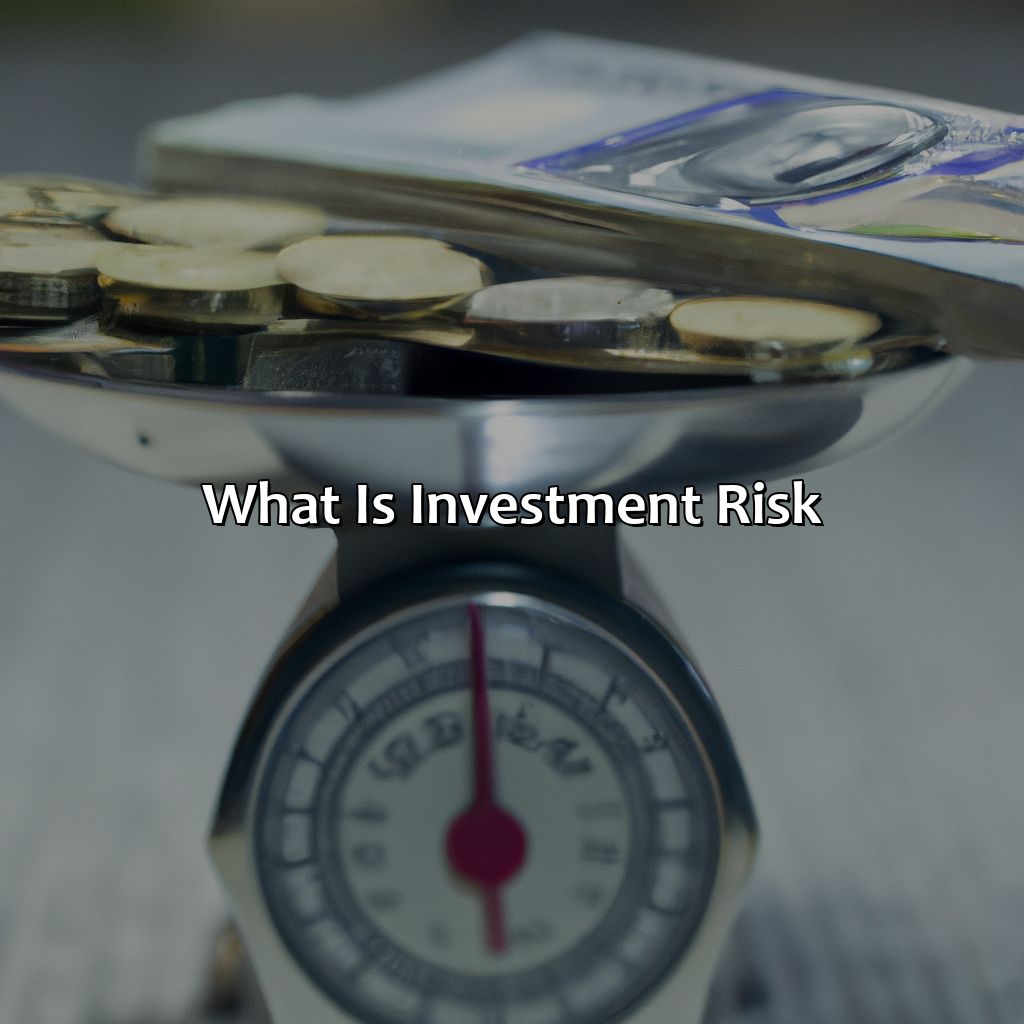What Is Investment Risk?
Key Takeaway:
- Investment risk refers to the potential for an investment to lose value or fail to meet its expected returns. It is an inherent part of investing, and understanding it is crucial for making informed investment decisions.
- There are different types of investment risks, including market risk, credit risk, and liquidity risk. Each type of risk has specific characteristics and can affect investments in different ways.
- Several factors can affect investment risk, such as economic conditions, political stability, and company performance. Being aware of these factors can help investors evaluate the risks associated with their investments.
- Understanding investment risk is important for making informed investment decisions that align with individual investment goals and risk tolerance. It also helps investors avoid common mistakes, such as overexposure to a single investment or ignoring risk altogether.
- Investment risk can be mitigated through diversification, asset allocation, and risk management strategies. These approaches involve spreading investments across different types of assets, sectors, and regions, and developing an investment plan that considers risk and return objectives.
Are you wondering if investing carries potential risk? Worried that you could lose your hard-earned money? Keep reading to find out what is investment risk and how to manage it.
Definition of Investment Risk
Investment risk refers to the possibility that an investment’s actual returns might differ from its expected returns. This risk can arise from a variety of factors, such as changes in market conditions, inflation, geopolitical events and regulatory changes. Investors aim to manage this risk by diversifying their portfolio across different asset classes, industries and geographies. By doing so, they can spread their risk and reduce the impact of any single investment’s performance on their portfolio.
It is important to note that investment risk cannot be completely eliminated, but can be managed effectively by careful planning and research.
In addition to diversification, other ways to manage investment risk include:
- investing in assets that have a low correlation with each other
- setting stop-loss orders to limit losses
- taking advantage of hedging strategies
These strategies can help mitigate risk and provide a more stable investment experience.
One real-life example of investment risk occurred during the global financial crisis of 2008. Many investors had heavily invested in mortgage-backed securities, which were later found to be much riskier than previously thought. As a result, the value of these securities plummeted, causing significant losses for investors who had not diversified their portfolio.
Investment risk is an inherent part of investing, and it is important for investors to understand and manage it effectively. By diversifying their portfolio, incorporating risk management strategies and staying up-to-date with changing market conditions, investors can minimize their risk and achieve their investment goals.

Image credits: retiregenz.com by Harry Washington
Types of Investment Risks
Gaining insights into investment risks that can affect your returns? Dive into the “Types of Investment Risks” section. Sub-sections include:
- “Market Risk”
- “Credit Risk”
- “Liquidity Risk”
Uncover the various types of investment risks of your portfolio.

Image credits: retiregenz.com by James Arnold
Market Risk
Investment Risks You Need to Know Before Investing
When investing in any market, there are risks that you need to be aware of. These risks vary from market to market, and they can pose a significant threat to your potential returns. If you’re an investor looking for long-term investments, then it is imperative that you understand the types of risk associated with investing. Market Risk or systemic risk is one type of investment risk that particularly refers to the probability associated with an entire market decline due to some events such as natural calamities, wars and pandemics.
Market Risk measures how much variation there is in returns on a portfolio given its average return over some period. This type of risk reflects the possibility of losing value due to factors beyond your control, such as economic downturns or political instability.
In particular, market risk has become more prominent during times of recessions and global crises. For instance, when COVID-19 initially hit the world in 2020, several investors around the globe experienced sudden drop-downs in their portfolios’ values because markets went down significantly.
To protect against this kind of potential loss for long-term investments, managing your portfolio’s diversification through spreading ones’ investments across multiple stocks will reduce exposure to one particular company or sector. Understanding more about investment risks as a whole will allow you to design your strategy better so that your portfolios have fewer chances of underperforming over time.
Credit risk – the risk of loaning money to someone who will forget to pay you back, or worse, will remember but choose not to.
Credit Risk
Investment uncertainty arises when there is a possibility that the borrower might turn default or miss the payment deadline, which is known as ‘default risk’. It also includes the individual’s inability to pay off timely because of insolvency, bankruptcy, or other factors beyond their control.
The credit risk estimation scales an investor’s exposure to possible losses due to default risk. Analysis consists of assessing potential returns on investment and borrower characteristics like past credit history, collateral coverage, debt/equity ratio and external political factors that could impact repayment. Measuring this before investing in financial instruments with varying degrees of creditworthiness helps stakeholders limit risk.
It’s important to recognize and be aware of the many unique variables to make informed decisions about investments vulnerable to certain risks. Informed decision-making entails a thorough comprehension of probability assessment, return optimization and diversification strategies in perceiving investment risk.
One way to mitigate credit risk is by investing in diverse portfolios instead of relying solely on one source. Changing up investments by asset class and sharing resources among others who share mutual interests will often avoid economic setbacks caused by a single investment loss. By assessing individual borrowing histories, such as when they intend to repay their debts/loans can also provide significant insight into how safe it is to invest in them.
Having cash in hand is great, but if your investments suffer from liquidity risk, you might as well be holding Monopoly money.
Liquidity Risk
Investment Liquidity is a type of risk that arises when it’s difficult to buy or sell an investment at the desired price and time. This problem is prevalent in assets that have low trading volumes, high buying cost and extended settlement periods.
One potential consequence of facing Liquidity Risk could be a loss, particularly if the investor needs to sell quickly but cannot find a buyer at an acceptable price. It can leave investors with limited options, making them vulnerable to financial losses.
Additionally, reducing liquidity risk requires careful selection of securities as it can impact the overall portfolio’s performance. Opting for investments with high trading volume can mitigate this risk by offering quick access to buyers and sellers.
Investors should also avoid investing a significant amount in illiquid securities. Creating an optimal balance between liquid and illiquid assets in one’s portfolio ensures overall stability while mitigating excessive exposure in any single component.
Buckle up, because the factors affecting investment risk are about to take you on a rollercoaster ride.
Factors Affecting Investment Risk
To apprehend investment risk in correlation with economic advancement and political constancy, you must zoom in on three sub-sections. These are:
- Economic conditions
- Political constancy
- Company performance
This will give you a thorough knowledge of the several aspects which can affect your investment risk level.

Image credits: retiregenz.com by Yuval Woodhock
Economic Conditions
In the world of investment, the state of the economy can heavily impact a portfolio’s risk. The current financial climate and economic indicators determine the degree to which investments will fluctuate in value. Economic Factors play a crucial role in determining a portfolio’s overall performance. Market timing, interest rates, inflation rates, and unemployment rates all have an effect on specific investments. Understanding these dynamics requires diligent research and analytic skills.
Macro-economic indicators such as Gross Domestic Product (GDP) growth rate, Inflation rate, Consumer Price Index (CPI), Purchasing Manager Index (PMI), etc., are critical factors that must be considered when assessing investment risks. Sluggish economic activity results in low consumer and business confidence leading to decline in investor demand for riskier investments like equities while choosing safer investments such as bonds or cash.
Investors must continually monitor economic conditions as they evolve over time. They should consider responding to slow market movements by using defensive strategies in their portfolio. Additionally, being patient during periods of economic uncertainty can protect portfolios from unnecessary losses.
To manage risk effectively relative to current market trends, investors should adjust or allocate their investment strategies according to changing economic conditions. Diversification of portfolios can prove beneficial across asset classes like Equities, Derivatives, Commodities & Bonds through exposure across regions and industries which minimizes exposure to systematic risk factors faced by individual assets while offering enhanced returns with potential tax efficiencies if managed properly.
Political stability is a lot like a unicorn- everyone wants it but nobody can find it.
Political Stability
The stability of a region’s political environment affects investment risk. Political turmoil and instability create uncertainty, making it difficult to predict future economic conditions. This uncertainty causes investors to perceive higher risks in investing in such regions.
Moreover, changing policies, unpredictable regulatory frameworks, sudden government changes, civil conflicts and geopolitical tensions may further increase risks associated with investments. The political situation directly impacts the demand for goods and services offered by companies, their sales prospects and profitability.
Investors must take into account these risks before investing in areas experiencing political unrest. They can diversify their portfolio by investing in more stable regions or seek insight from local experts before investing.
Pro Tip: Conduct thorough due diligence to understand the political landscape of an investment area is critical for long-term success.
Trying to predict a company’s performance is like trying to predict the weather in England – it’s mostly cloudy with a chance of unexpected showers.
Company Performance
When considering investment risk, the performance of a company plays a crucial role. The financial health of an organization, its profitability, and growth projections are essential factors that determine the overall investment risk. It is important to look at the level of debt carried by the company, as excess debt can impact its ability to generate profit and pay back investors’ money. Additionally, factors such as market share, competition, and industry trends can influence investment risk.
Moreover, analyzing a company’s management team can provide useful insights into its performance potential. Evaluating how the team is structured, assessing their experience in their respective fields and their track record enable investors to determine how management decisions may affect profit-making chances. It can also indicate if changes in leadership could jeopardize investment returns.
A company with proven positive performance record not only indicates lower-risk investments but also provides higher likelihoods for successful outcomes for investors. For instance, according to Forbes magazine’s yearly Global 2000 ranking conducted in 2021 on highly valuable publicly traded companies worldwide based on various metrics like revenue/sales/profit/debt levels/ assets levels etc., JPMorgan Chase is rated #4 globally with a net worth of $483 billion.
Understanding investment risk is like knowing which wire to cut when defusing a bomb – one wrong move and boom goes your portfolio.
Importance of Understanding Investment Risk
Investment Risk: Understanding its Significance in Decision-Making
Investment risk analysis plays a significant role in making informed financial decisions. It is pivotal to gain a clear understanding of the potential risks associated with investment options to maximize returns. The ability to evaluate and manage risks can help investors make profitable decisions.
Investment risks can range from market risks, credit risks, geopolitical risks, and liquidity risks, to name a few. Analyzing these risks can aid investors in determining the optimal investments for their specific needs and goals. Additionally, understanding investment risk can help investors diversify their portfolios, which can reduce risk exposure.
When analyzing investment risks, it is important to consider the risk tolerance of an individual. Risk tolerance can vary from person to person, and it is crucial to select investments in line with the specific risk appetite. Moreover, this can help to avoid panic-selling during market fluctuations, and investors can instead take advantage of short-term opportunities.
Pro Tip: During investment risk analysis, it is important to take a holistic view of the investment landscape and consider varying risk scenarios. Using sophisticated analysis tools and diversifying investments can help to manage risk exposure and maximize portfolio returns.

Image credits: retiregenz.com by Adam Jones
Mitigating Investment Risk
Mitigating investment risk? Employ a diversity of tactics to protect against potential losses. Such as diversifying – spread investments among different assets. In addition, asset allocation and risk management strategies have an essential role in mitigating investment risk.

Image credits: retiregenz.com by James Jones
Diversification
Investment Diversification is a strategy to minimize risks by investing in various financial instruments. This approach aims to spread investments across different asset classes, geographies, sectors, and currencies. By diversifying, investors reduce their exposure to a single risk factor. This method mitigates the impact of any adverse events that might happen in one industry or sector. A diversified portfolio has lower volatility than an undiversified one.
To diversify effectively, investors must understand the correlation between their investment options. A mere allocation does not imply diversification if those investments are not significantly uncorrelated. By spreading assets across multiple unrelated investments, investors balance volatility with potential returns.
Investing solely in one industry or geographical location comes with the chance of a total loss if something goes wrong with that industry or economy. For example, during the global pandemic, airline stocks have experienced severe losses due to lockdowns and travel restrictions affecting airline travel worldwide – therefore causing sufficient reason to diversify holdings.
An investor who ignores such realities may end up losing all investment capital stuck in a sector or stock whose fortunes have dwindled without any plan B’s as backup plans – typically something good for an individual investor’s portfolio to appreciate eventually over time without devaluation due to market changes would come from making sound long-term investments that offer a return on investment (ROI).
Investing is like going on a blind date; you need to diversify your assets for a chance at love, or in this case, profit.
Asset Allocation
Investing money wisely is necessary to mitigate potential risks. The technique of assigning an appropriate portfolio mix, varying in asset classes and investment strategies, is known as Dynamic Asset Management.
Market trends largely impact the asset allocation process to ensure diversification that matches risk tolerance and investment goals. This strategy helps investors to maximize their gains while minimizing losses. Dynamic asset allocation can be automated using online robo-advisors, providing new opportunities for retail investors to participate in diversified investments alongside institutional investors.
Diversifying your portfolio with a personalized mix of assets can help you steer clear of unforeseeable risks led by economic downturns, market turbulence, inflation or unexpected events like pandemics. Avoid investing all your savings into one asset class and let experts manage your investments for you.
Fear of missing out on lucrative offers often tempts many people to invest beyond their risk tolerance capacity. Avoid such hasty decisions, and instead, have a disciplined approach towards investing with dynamic asset management strategies in place. Have a long-term vision that aligns with your investment goals, and work towards it consistently over time.
Risk Management Strategies
To optimize investment outcomes, strategies to manage potential hazards and uncertainties must be prioritized. Investment protection plans can reduce the likelihood of negative consequences on invested funds. The implementation of risk alleviation methods is a necessity to maintain economic stability.
The first method to mitigate investment risk is diversification. This strategy involves investing in a range of financial products from different markets and industries to spread out assets. Diversification ensures that an investor’s money is not all tied up in one location. Another technique for managing investment danger is hedging, which involves balancing large investments with protective collateral or insurances.
A significant way to reduce market risks is through continuous monitoring of finances and identifying potential threats. Investors should make use of data analytics systems as well as other software to track market trends and patterns continuously. Risk management strategies could also include analysis and hedging against macroeconomic events and their effects.
Historically, several renowned investors have protected their portfolios by utilizing risk mitigation methodology’s diversified incorporation that greatly minimizes concentrated investments’ risks. For example, billionaire Warren Buffet has followed this strategy throughout his career, spreading his capital across food stocks like Coca-Cola while always keeping an eye out for new opportunities in tech companies like Apple Inc., thereby reducing potential adverse economic impacts on his portfolio.
Some Facts About Investment Risk:
- ✅ Investment risk is the potential for loss in an investment, either due to market movements or other factors. (Source: Investopedia)
- ✅ Different types of investments have different levels of risk, with stocks generally being riskier than bonds or mutual funds. (Source: Vanguard)
- ✅ Diversification can help mitigate investment risk by spreading investments across different assets and sectors. (Source: Forbes)
- ✅ Past performance does not guarantee future results, and even the most well-researched investments can still involve risk. (Source: The Balance)
- ✅ It is important to evaluate and manage investment risk according to individual financial goals and risk tolerance. (Source: Fidelity)
FAQs about What Is Investment Risk?
What is investment risk exactly?
Investment risk is the possibility that investing in a particular asset or security could lead to a loss of capital. Common types of investment risk include market risk, credit risk, inflation risk, and liquidity risk.
How can I measure investment risk?
There are several ways to measure investment risk, including standard deviation, beta, and value at risk (VaR). These metrics can help investors gauge the potential volatility of a particular investment and make more informed decisions about their portfolio.
What are some common examples of investment risk?
Some common examples of investment risk include stock market fluctuations, bond defaults, inflation eroding the value of cash investments, commodity price swings, and geopolitical events that can impact global economies and markets.
How can I manage investment risk in my portfolio?
There are several ways to manage investment risk in your portfolio, including diversification, asset allocation, dollar-cost averaging, and setting stop loss orders. Additionally, working with a financial advisor who specializes in risk management can help you make more informed investment decisions.
What are some strategies for minimizing investment risk?
Some strategies for minimizing investment risk include investing in a variety of asset classes, diversifying across industries and geographies, investing in low-risk assets alongside higher-risk ones, maintaining a long-term investment horizon, and staying informed about your investments.
Is there such a thing as risk-free investing?
No investment is truly risk-free, though some investments are considered to be less risky than others. For example, U.S. Treasury bonds are often considered to be relatively low-risk investments, while investing in individual stocks or cryptocurrencies can be much riskier.
